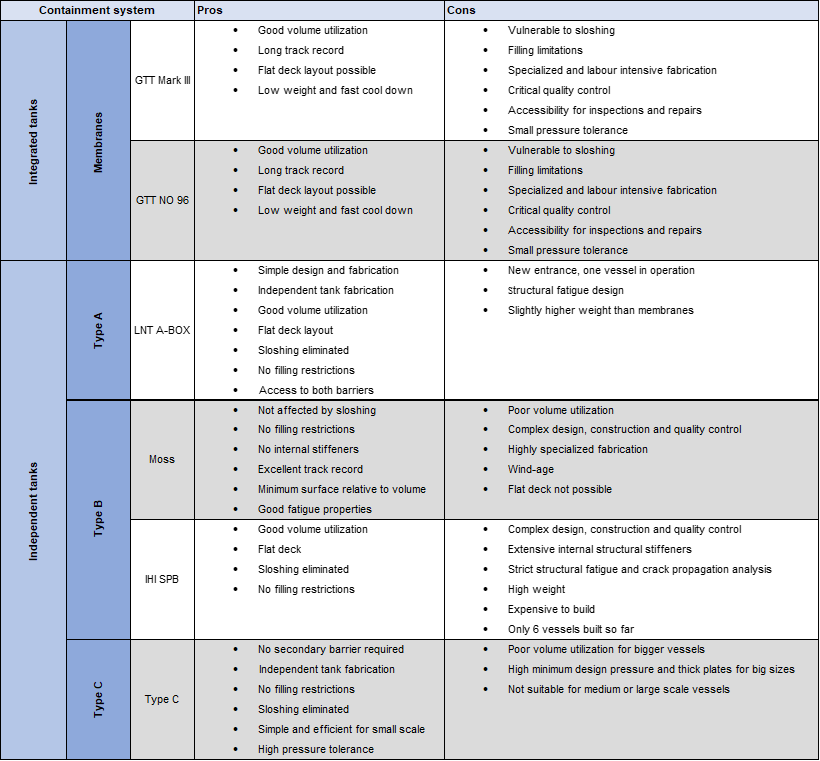IMO Independent Self Supporting Tank Type A
The International Maritime Organisation’s (IMO) International Code for the Construction and Equipment of Ships Carrying Liquefied Gases in Bulk (the IGC Code) sets the design basis and criteria for four types of cargo containment systems (tanks) allowed for transportation of liquified gases. These are independent tank types: A, B and C and the integrated tank type called Membrane.

The IGC Code was adopted by resolution MSC. 5(48),and has been mandatory under SOLAS chapter VII since 1 July 1986.
* Can be strengthen to P ≤ 0.7 barG
LNT Marine carries history into the future....
The first custom-built LNG carrier, the 27,400m3 “Methane Princess” was a type A containment system according the (later) IGC Code and had independent aluminum cargo tanks. It was developed for Conch International Methane[1] and was owned 100% by Shell. The vessel was built by Vickers Armstrong in the UK in 1964 and served the world’s first commercial LNG trade between Arzew, Algeria and Canvey Island, England. The sister vessel “Methane Progress” was built by Harland and Wolff in 1964. “Methane Progress was scrapped in 1986, and “Methane Princess” in 1997.
In 1969, Esso, with its own type A vessel design, took delivery of the “Esso Brega” and “Esso Liguria” (30,000m3) from Italian shipyards Italcantieri and Fincantieri. The vessels ended as “LNG Palmaria” and “LNG Elba”, owned by SNAM of Italy and was scrapped in 2012.

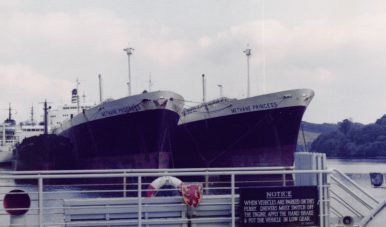
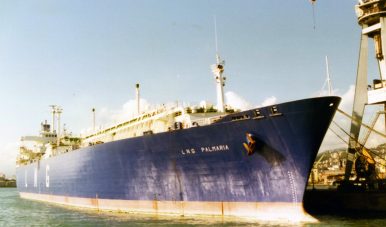
The first type A LNG carrier built in 50 years, is the LNT A-BOX carrier “Saga Dawn” which was built and delivered by China Merchant Heavy Industries in December 2019 and has been in commercial operation since early 2020. The vessel is trading in Asia and has now been renamed to “LNG Jia Xing”.
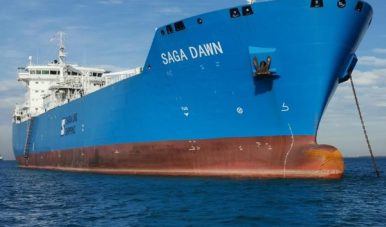
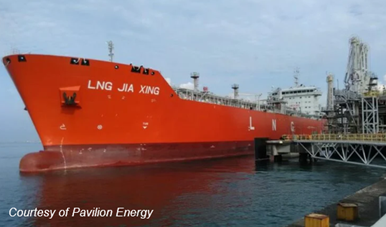
Independent tank type A - IGC 4.21.1
IMO Type A Tank
Type A independent tanks are primarily designed using classical ship-structural analysis procedures in accordance with recognized standards. If the cargo temperature at atmospheric pressure is below -10°C, a complete secondary barrier shall be provided. (IGC Code 4.21.1) This means ordinary stress calculation based on allowable stress, and insulation in combination with a complete secondary barrier that protects the hull. What we can call a traditional type A has mostly been used for carriage of LPG with an inner hull of low temperature steel (certified to -55°C) as a secondary barrier. For cargo temperatures lower than -55°C the inner hull cannot be used as the secondary barrier and a separate secondary barrier is required. This, to meet the design criteria of the IGC Code for LNG applications, a different arrangement is required.
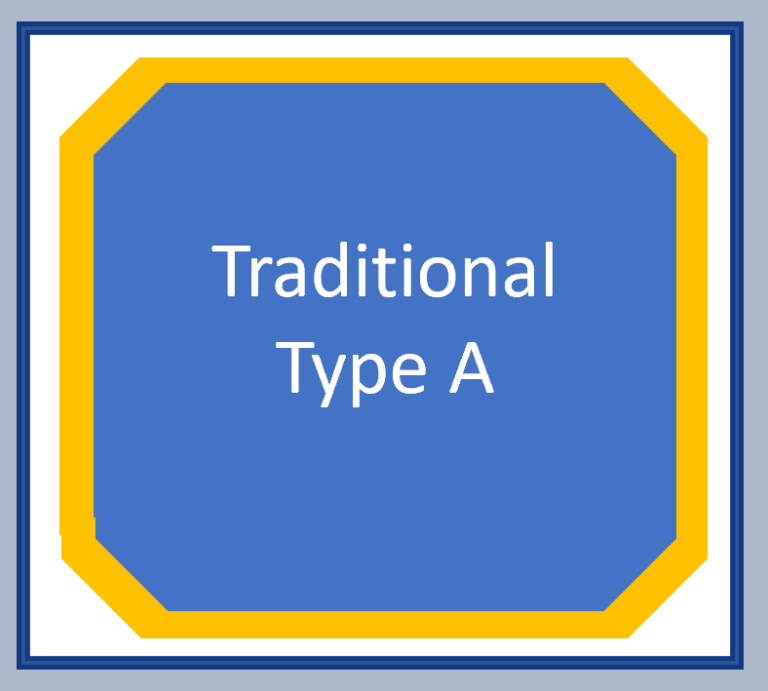
- Traditional Type A: Independent tank with insulation on the tank.
- Inner hull of low temperature steel acting as a complete secondary barrier.
- Ambient temperature in hold space
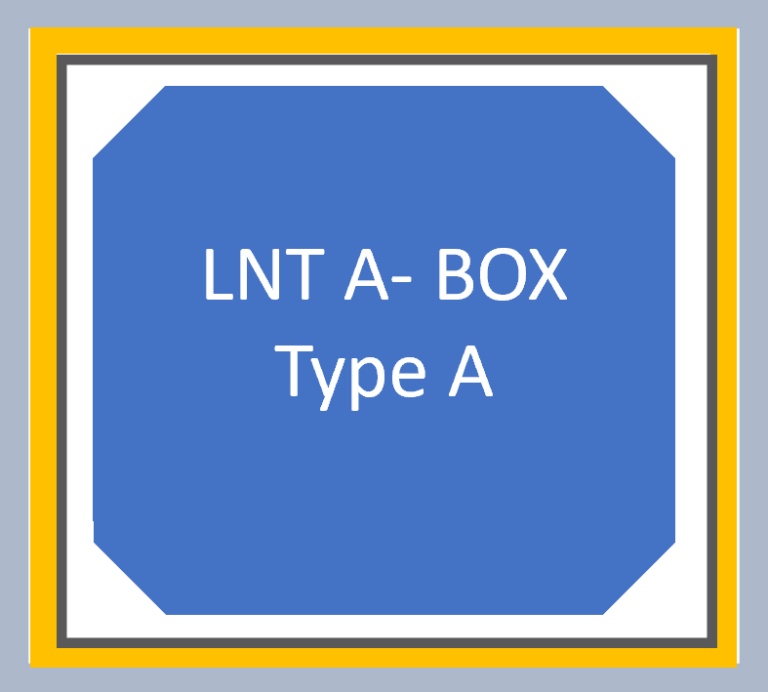
- LNT A_BOX: Independent tank with the complete secondary barrier in front of the insulation protecting the hull.
- Hull in normal shipbuilding steel.
Cold interbarrier space between the tank and the secondary barrier.
Independent tank type B - IGC 4.22.1
What is the difference between type A and type B?
Type B independent tanks are designed using model tests, refined analytical tools and analysis methods to determine stress levels, fatigue life and crack propagation characteristics. If the cargo temperature at atmospheric pressure is below -10°C, a partial secondary barrier with a small leak protection system shall be provided. (IGC Code 4.22.1). This means advanced and precise engineering studies, including strength analysis and laboratory tests.
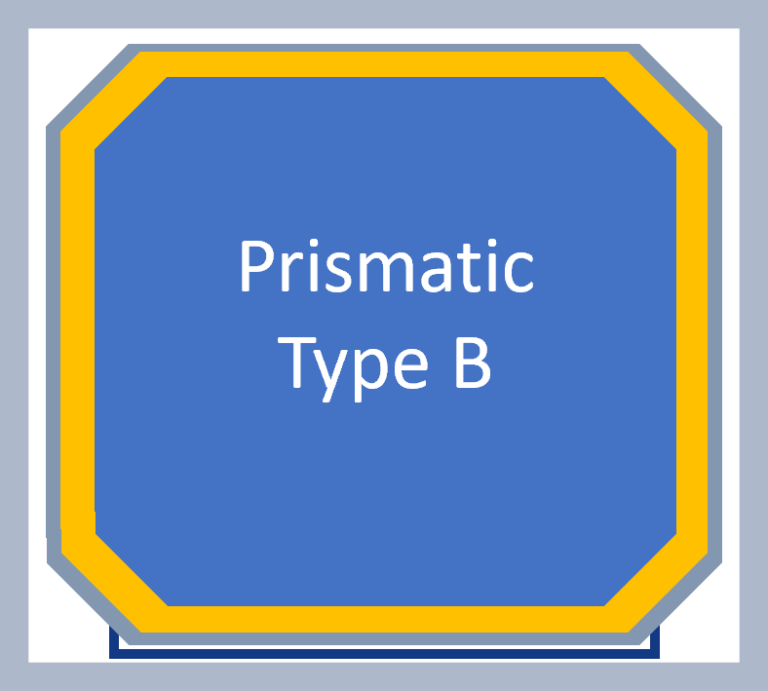
- Independent tank with insulation on the tank and a partial secondary barrier leading any leak to drip tray for evacuation.
- Hull in normal shipbuilding steel.
- Ambient temperature in hold space.

- LNT A_BOX: Independent tank with the complete secondary barrier in front of the insulation protecting the hull.
- Hull in normal shipbuilding steel.
Cold interbarrier space between the tank and the secondary barrier
